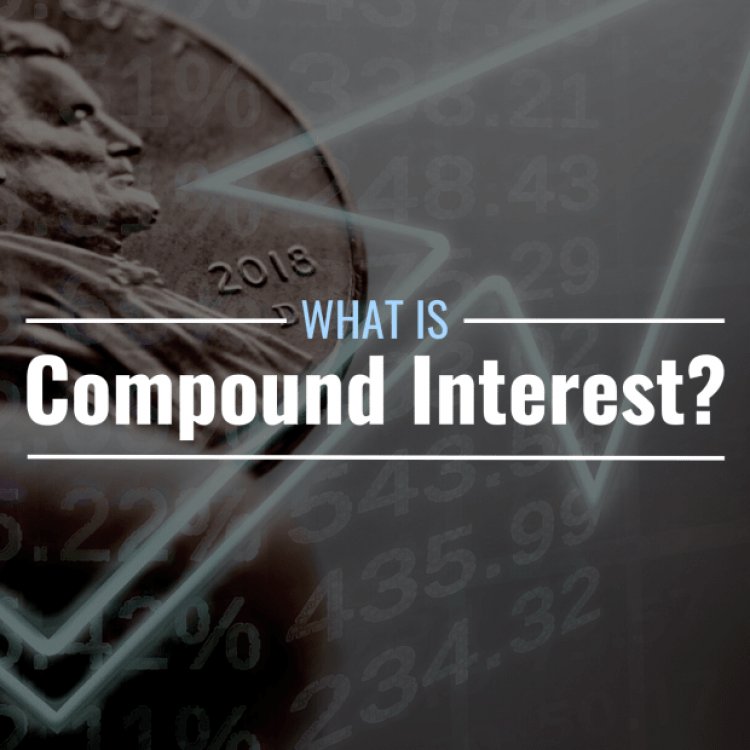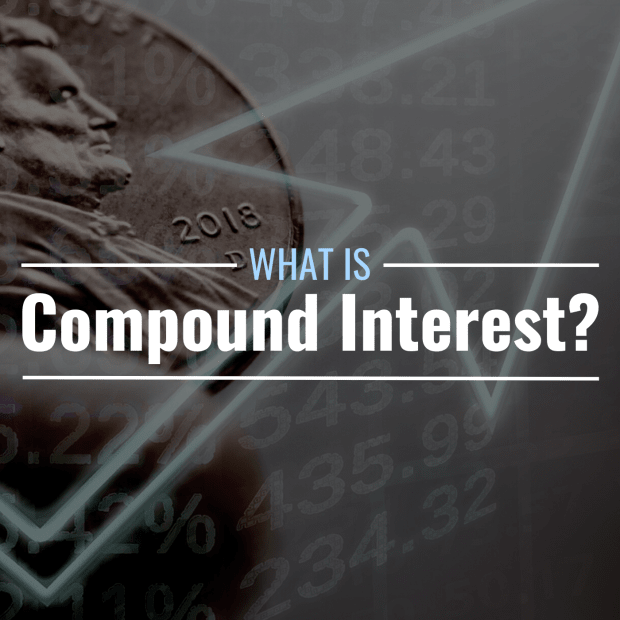What Is Compound Interest? Definition & How to Calculate
Compound interest is one of the most useful and helpful tools when it comes to saving money. Whether a person is saving money for their rainy day or emergency fund or taking the next step to set aside a portion of their paycheck for longer-term goals like their retirement, the accumulation of ...


Compound interest is one of the most useful and helpful tools when it comes to saving money. Whether a person is saving money for their rainy day or emergency fund or taking the next step to set aside a portion of their paycheck for longer-term goals like their retirement, the accumulation of interest boosts that goal.
Saving as much money as you can and doing so when you are younger makes it more effective. This basic concept means that a person earns interest on top of the interest whether they have $500 or $5,000 saved.
Many experts have touted compound interest as the greatest advantage that investors have to accumulate more money for a down payment for your first house, vacations, or retirement. Forgoing that dessert or expensive pair of earbuds really does add up in the long run.
What Is Compound Interest?
Compound interest is when the money you have saved earns interest from a bank or credit union or retirement account like a 401(k) plan or IRA. It also works in reverse. The interest you accumulate from not paying off the balance of your credit card account or a high-interest personal loan can add up quickly, making it more difficult to save money.
In layman's terms, compound interest is simply interest on interest. The more money you are able to sock away in a savings account, certificate of deposit (CD), or retirement account, the more interest you can earn. Even if you are only able to save a small amount such as $25 a week, or $100 a month, the compound interest on that amount can accumulate quickly.
How to Calculate Compound Interest
The formula for calculating compound interest on your principal is:
A = P (1 + r / n) * (nt)
In this equation, P is the principal, r is the interest rate, n is the amount of compounding periods in a year and t is the amount of time in years. Using this equation we can calculate A, which is the final amount.
For example, you deposit $15,000 into a savings account that has a 5% annual interest rate compounded monthly for 10 years. This would make r .05 and n 12. If we input everything into the formula, it would be:
A = $15,000 * (1 + 0.05 / 12) * (12 * 10) = $15,000 * (1 + 0.0041667) * (120) = $15,000 * (1.64700949769) = $24,705.1424654
In 15 years, your $15,000 deposit would turn into $24,705.14.
If you were just trying to find out how much interest it would be without the principal amount, simply do the formula and then subtract the principal amount. That would give us 24,705.142654 — 15,000 = 9,705.14246535. That would be $9,705.14 in interest.
How Compound Interest Impacts Savings Accounts
Many individuals start saving money and earning interest in a basic savings account since there are no penalties for withdrawing money. Consumers can increase the amount of money they have saved and earn more interest when they automatically have money allocated from their paycheck into a savings account.
When a depositor does not take money out of their savings account, they can earn more interest. Simple interest is interest on principal only. If a person puts $100 in a savings account and earns 10% interest annually, the account will be worth $110 in one year. If that money stays invested earning 10% interest for one more year, there will be $121 in the account. That's $10 simple interest each year and $1 interest for the second year on the $10 earned in interest the first year. Adding more money in the second year will yield more savings because it will be added to the new balance.
How Compound Interest Helps Grow Retirement Accounts
The sooner employees are able to start saving money in a 401(k) plan, IRA or Roth IRA, the more money they can accumulate because of compound interest. Investing in stocks through a mutual fund or ETF can increase the amount of money in a retirement portfolio. Experts recommend that investors start saving for retirement, even if the amounts are small in the beginning such as $200 a month, and they have a diversified portfolio of stocks. As your salary rises each year, increase the amount you are saving for your retirement. Avoid spending bonuses and try to save those also for your retirement.
Watching the fees charged by a mutual fund, retirement plan or financial adviser is also important because the fees also compound over time similar to investment returns. Even a 1% fee that appears innocuous adds up over 30 or 40 years.
For instance, a person who socks away money from their paycheck into a retirement account that grows by 8% annually before fees and pays 1% of assets under management to have that account managed is really earning 7% compounded annually. If the account had saved $1 million then in 20 years, the amount would grow to $3.87 million. However, if the person did not have to pay 1% each year in fees, then the individual would have accumulated $4.66 million for retirement. While 1% does not sound like a lot of money, in this scenario, it means losing out on $790,000.
Many experts, such as college professors and financial advisers recommend that people start saving as soon as possible. The longer you save money, the more money you can earn from just interest.
Even during volatile periods in the stock market, the longer a person accumulates money in a retirement account, the more money is accumulated.
When Compound Interest Hurts Consumers
On the flip side, accruing too much interest is detrimental to an individual. The interest calculated by credit card companies, payday lenders, or other lenders that provide auto loans or mortgages can accumulate quickly.
Consumers who are only making minimum payments for their monthly credit card payments are often only paying interest because a small portion of their payment goes toward the principal amount or the amount of money borrowed.
Since many credit card companies are charging interest rates that are double digits, paying more than the minimum amount will decrease the amount owed much faster. When you increase a monthly payment by an additional $50 or $100, it means that more money is paid each month toward the original amount of money that was borrowed and less on the interest.
As interest rates continue to rise because of the decisions made by the Federal Reserve, people who continue to carry a balance on their credit cards will wind up paying more money in interest. Interest rates for credit cards are adjustable, meaning they can increase at any time. So, when the Fed raises the federal funds rate, they also rise. If you have high interest rates on your credit card or another loan, making additional payments will help reduce the balance sooner. Refinancing a loan or mortgage is also an option and helps lower the amount of interest you are paying each month.
Once you pay off the entire balance on your credit card, you can start taking that same $200 you paid each month for the bill and allocate it into a CD or money market account to save for emergencies so you can avoid paying high interest rates.
What's Your Reaction?



























































